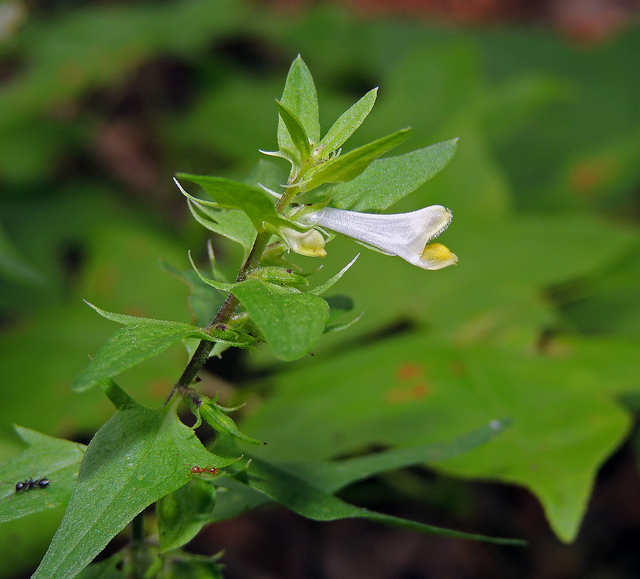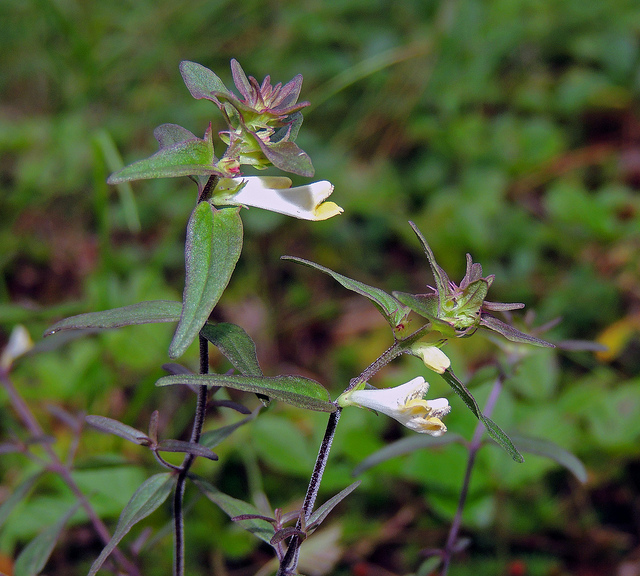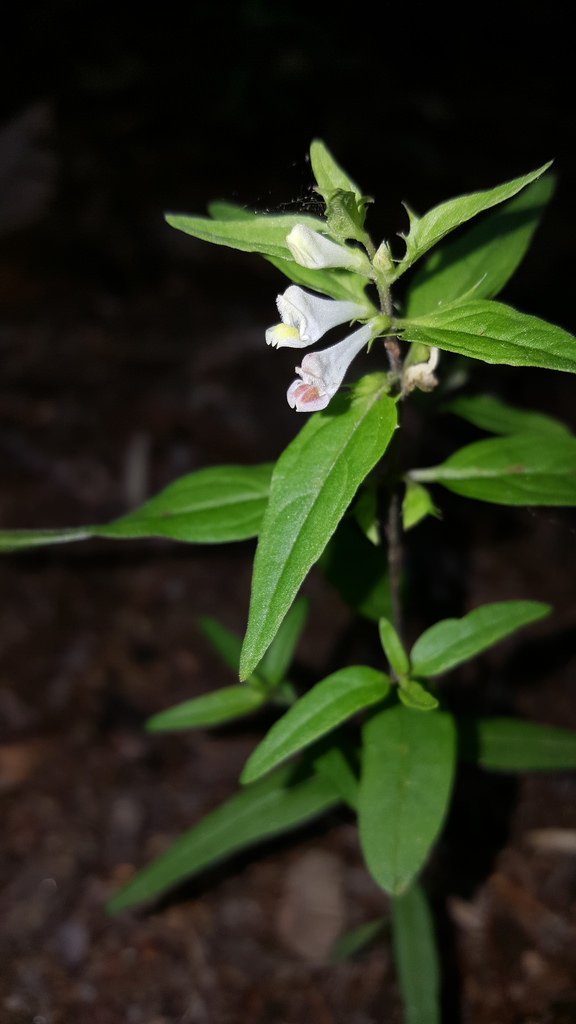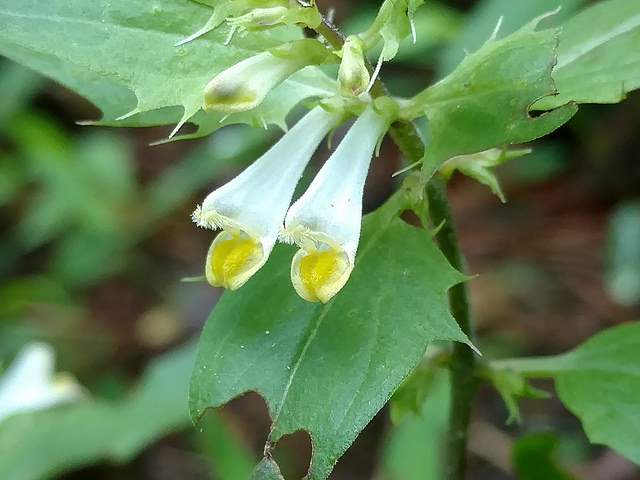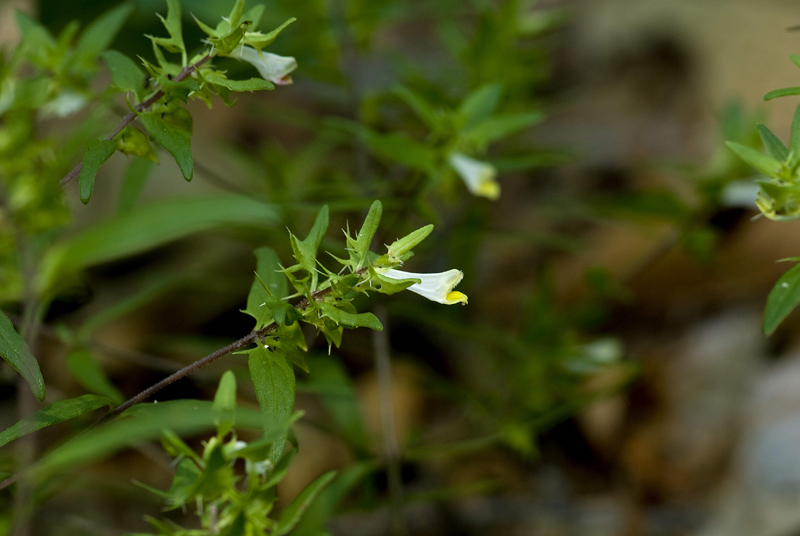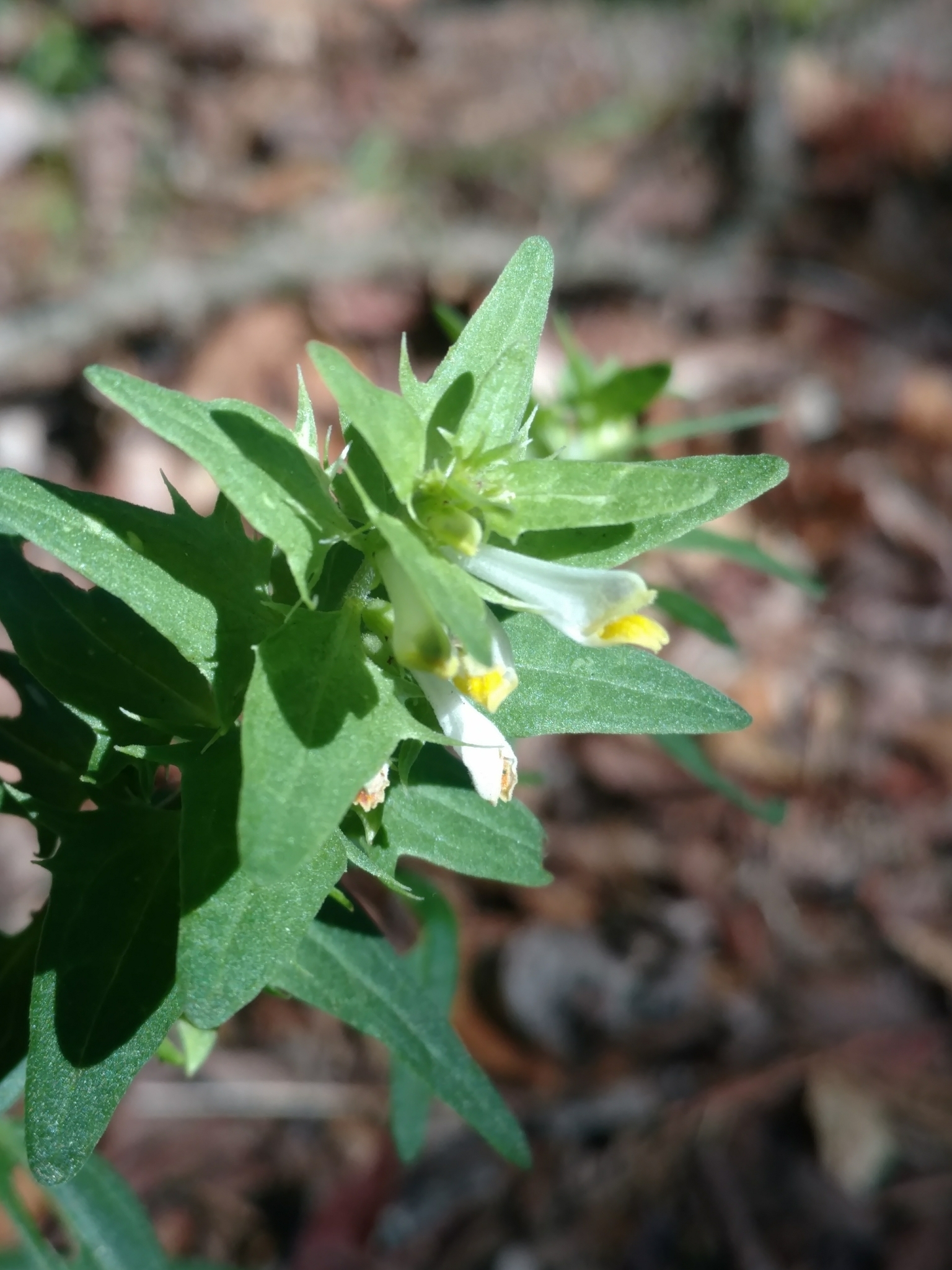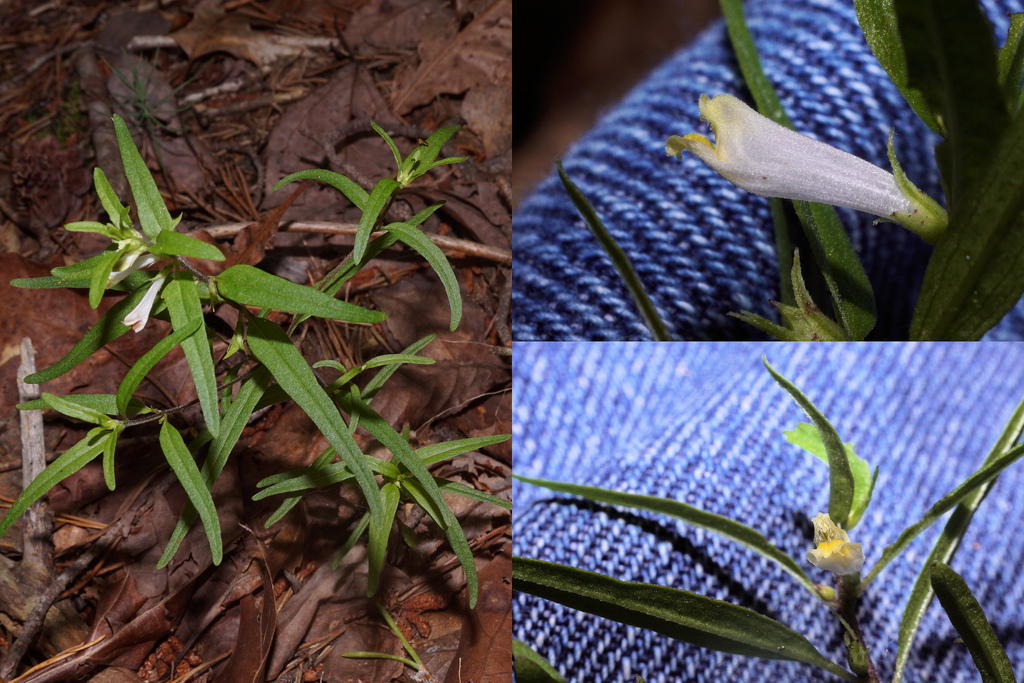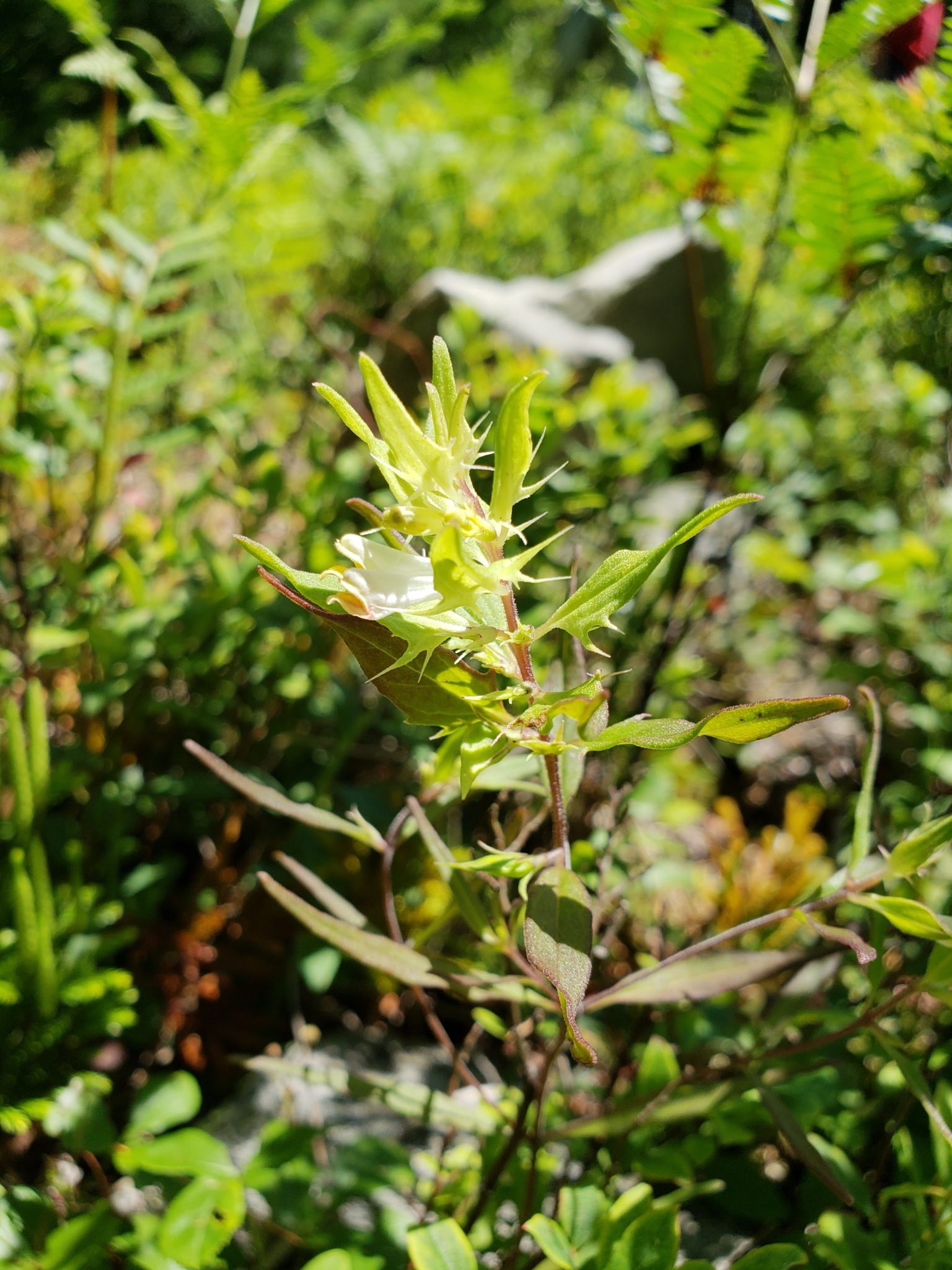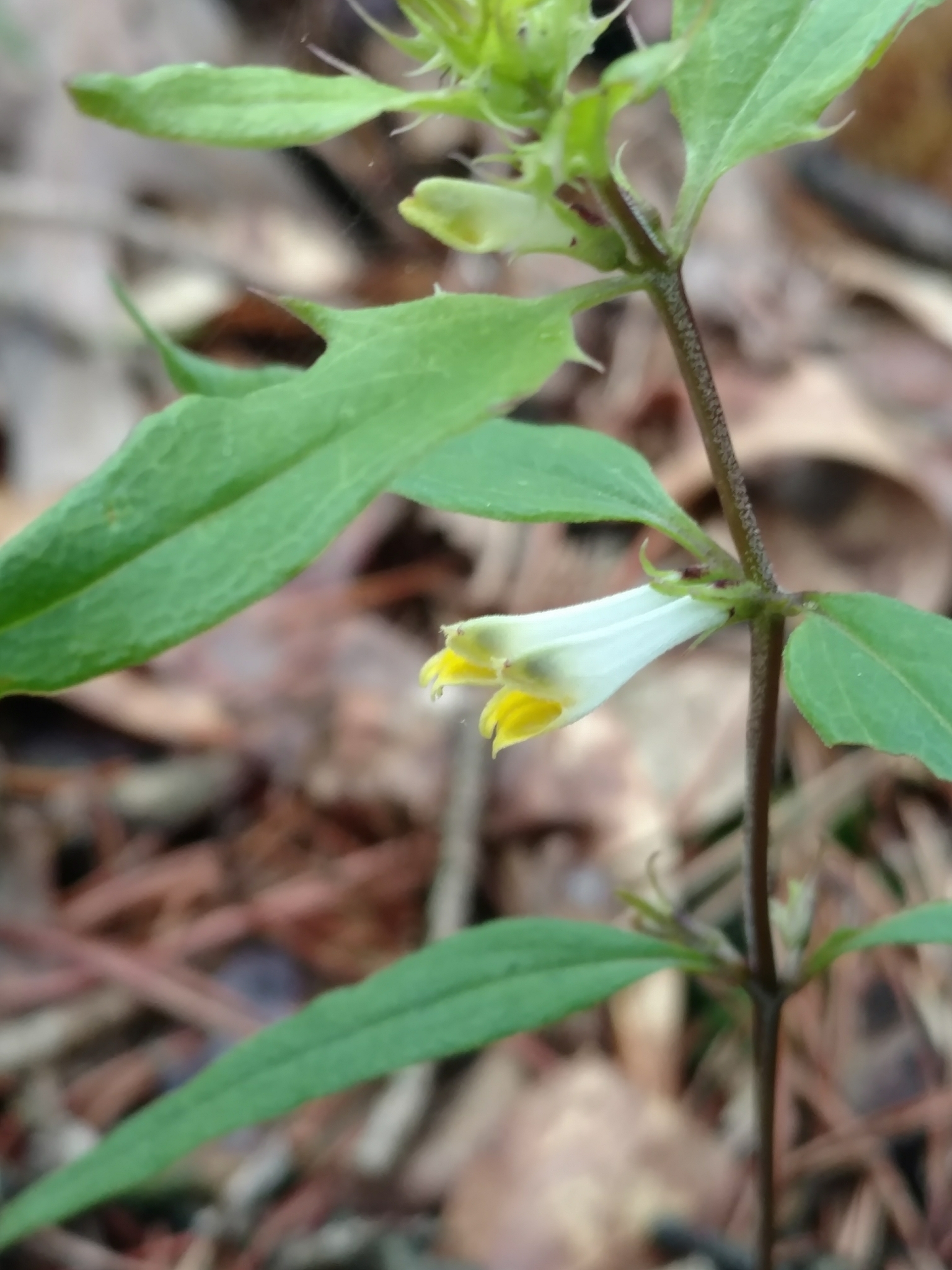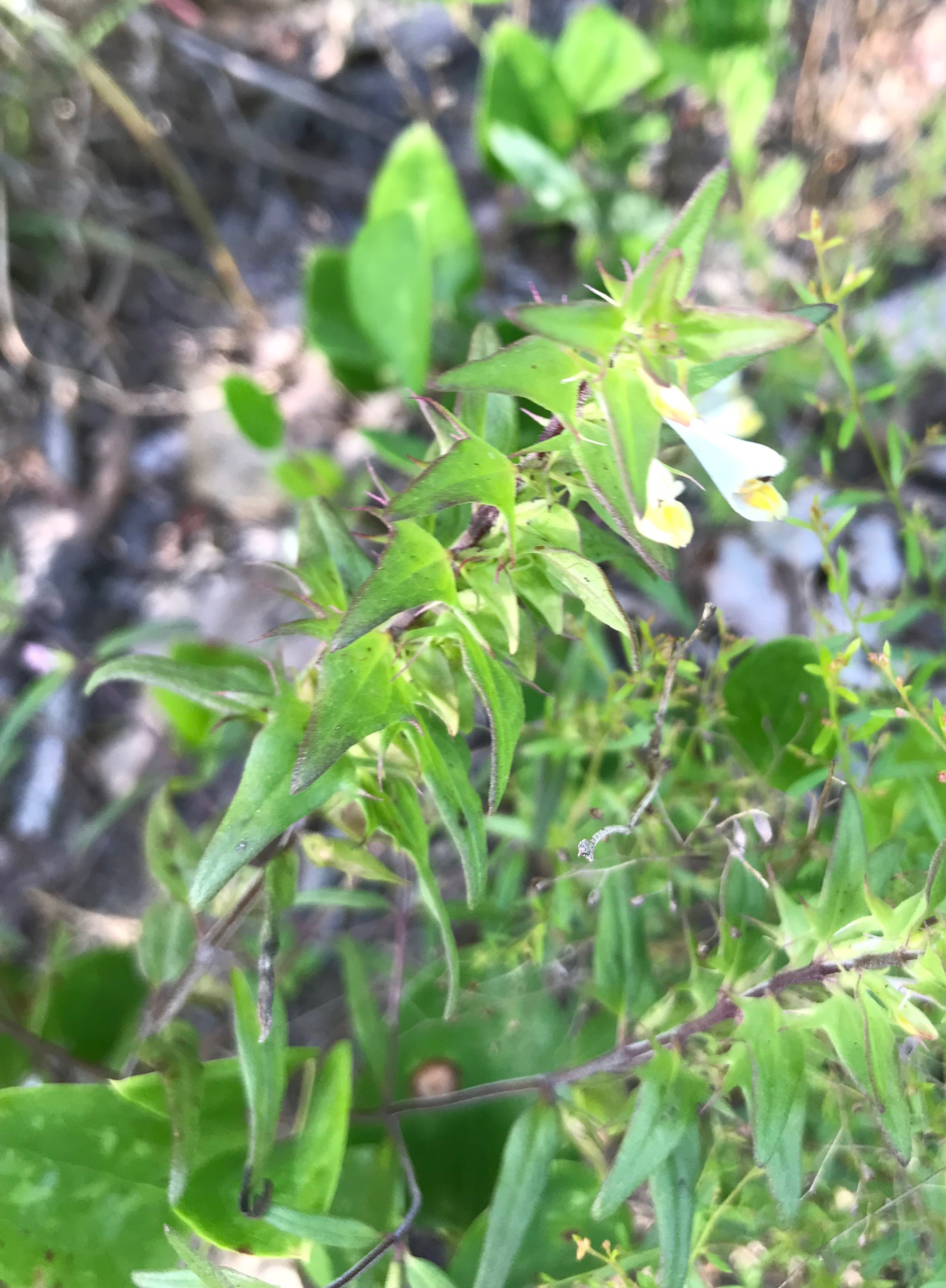Map Snapshot





















161 Records
Status
Narrow-leaved Cow-wheat is native to North America, where it grows in Canada and the northern United States, as well as southward along the Appalachian Mountains. It is hemi-parasitic, obtaining its nutrition from both photosynthesis and root parasitism.
Description
Growing in clumps about 1 foot high, Narrow-leaved Cow-wheat has linear, paired leaves. The flowers are tubular with white on lower lip.
Where To Find
Narrow-leaved Cow-wheat usually occurs in dry, somewhat exposed woods, and sometimes in damp boggy areas.
Relationships
Plants that Narrow-leaved Cow-wheat parasitizes include pines, other trees, and blueberry.
Seasonality Snapshot
Source: Wikipedia
| Melampyrum lineare | |
|---|---|

| |
| Scientific classification | |
| Kingdom: | Plantae |
| Clade: | Tracheophytes |
| Clade: | Angiosperms |
| Clade: | Eudicots |
| Clade: | Asterids |
| Order: | Lamiales |
| Family: | Orobanchaceae |
| Genus: | Melampyrum |
| Species: | M. lineare
|
| Binomial name | |
| Melampyrum lineare | |
Melampyrum lineare, commonly called the narrowleaf cow wheat,[1] is an herbaceous plant in the family Orobanchaceae. It is native to North America, where it is found in southern Canada and the northern United States, with an extension south in the Appalachian Mountains.[2] It has a wide habitat tolerance, but is usually found in drier and somewhat exposed woodlands.[3]
This species is hemiparasitic, meaning it receives energy from both photosynthesis and root parasitism. It is an herbaceous plant that grows in clumps about a 12 inches high. Its leaves are opposite and lanceolate to linear.[4] It produces tubular cream-colored flowers in the summer.[5]
Taxonomy
[edit]Four varieties have been considered. However, recent studies have cast doubt at the distinctiveness of these varieties, and the study recommends no recognition of them. Researchers have suggested the proposed varieties represent adaptations to varying habitats, and are not reproductively isolated.[6]
If recognized, the varieties are:[7]
- M. lineare var. americanum - A northern taxon
- M. lineare var. latifolium - Native to dry outcrops in the Appalachian Mountains
- M. lineare var. lineare - Widespread in the northern United States and in southern Canada
- M. lineare var. pectinatum - Native to the eastern Coastal Plain, from Massachusetts to Virginia
References
[edit]- ^ NRCS. "Melampyrum lineare". PLANTS Database. United States Department of Agriculture (USDA). Retrieved 26 January 2017.
- ^ "Melampyrum lineare". County-level distribution map from the North American Plant Atlas (NAPA). Biota of North America Program (BONAP). 2014. Retrieved 26 January 2017.
- ^ "Herbarium of the University of Michigan". Archived from the original on 2017-02-02. Retrieved 2017-01-26.
- ^ Minnesota Wildflowers
- ^ CT Botanical Society
- ^ Weakley, Alan; Poindexter, Derick; LeBlond, Richard; Sorrie, Bruce; Karlsson, Cassandra; Williams, Parker; Bridges, Edwin; Orzell, Seteve; Keener, Brian; Weeks, Andrea; Noyes, Richard; Flores-Cruz, Maria; Diggs, James; Gann, George; Floden, Aaron (29 November 2017). "New combinations, rank changes, and nomenclatural and taxonomic comments in the vascular flora of the southeastern United States. II". Journal of the Botanical Research Institute of Texas. 11 (2): 291–325.
- ^ "Flora of the Southern and Mid-Atlantic States".
